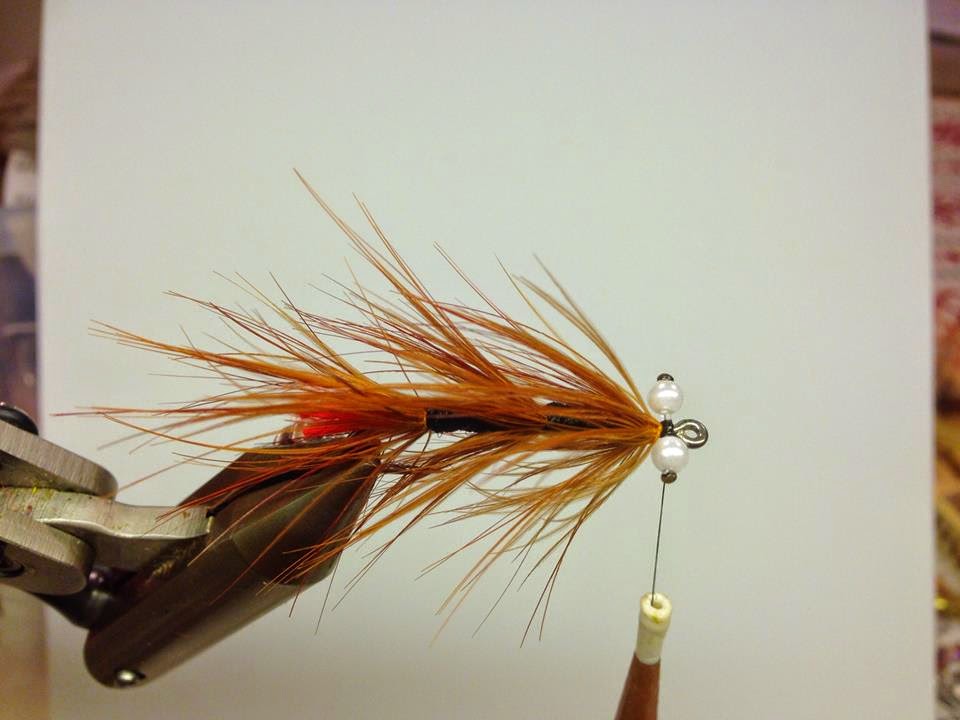HMG (hot melt glue) Baitfish
One of my favourite flies for sea trout fishing on the coast. A very durable and sturdy fly that can handle many fishing trips and many hungry trout.
I tie them in a few different sizes and varies the sizes of the eye quite a lot and actually it so that the variants with really big eyes fishes the best.
The disadvantage of hot melt glue flies is that they are a bit sticky to tie and they are actually quite difficult to get perfect bodies on. The glue love to obstinate. But on the other hand, you get one of the most sustainable flies available and the fish do not care a damn about beauty. A hearty meal goes before beauty.
Material
Hook: Mustad streamer Signature Saltwater S74SZ Size 4 or 6
Thread: Transparent mono thread
Eye: Dumbbell epoxy eyes or any epoxy Eyes that you prefer
Tail: 10-12 Crystal Flash in desired colour. This one I have used light pink to.
Under Body + head: 2/3 Same as the tail and the 1/3 in the front will be left for the eyes/head.
Over body: Hot melt glue
Body hackle: Light blue dun hackle and of course you can use what ever colour you like.
 |
1. Attach the thread just behind the hook eye
|
 |
2. Take 10-12 straw of crystal flash and wind them tight to the hook so that the will cover the hook for about 2/3.Cut them so that there will be a tail about 1/3 of the length of the hook shank.
|
 |
3. Chose a hackle whit hacklefibers that are about 1,5 time the length between the hook point and the hook shaft
|
 |
4. Prepare the hackle by pulling off the bottom shoddy parts and then pull the hackle fibers on one side of the hackle.The left side if you keep the tip of the hackle up and the convex side (the hackle outside) against you.Cut the last of the tip so that only a few mm is left.
|
 |
5. Attached the tip where the tail begins and wind the tying thread forward against the eyes.
|
 |
6.Then attach a pair of dumbbell epoxy eyes. If you use ordinary epoxy eyes you can go to next moment.
|
 |
7. As you can se so should the eyes be attached a few mm before the hook eye
|
 |
8. When I'm using hot melt glue I usually make some flies ready to the step where the hmg comes in.
|
 |
9. And as you can se I varies the sizes on the eyes.
|
 |
10. Now we have come to the tricky part, applying the coat of hot melting glue. This will take a little practice to master. It should be applied in the form of a carrot. Tapering towards the tail. Don't fill the gap between the eyes yet.
|
 |
11. Now start to wrap the hackle forward through the glue so that the hackle stem sinks into the glue and segmenting the body.
The hackle will now be firmly secured in the glue. When you arrive at your eyes, hold the hackle under tension so that it remain in the glue until the glue has set. It takes about 30 -60 sec.
It´s now you will continue with the eyes and head if you don´t use dumbbell epoxy Eyes. After the body and hackle been done continue with forming a head with the glue. Let the glue set for a couple of seconds then apply the eyes by gently pulling them into the glue. To form the head and adjusting the form put some saliva on a finger and carefully form it.
|
 |
12. Finish by filling up the space between the eyes and below them. Allow the glue to harden and the fly is finished.
|













































